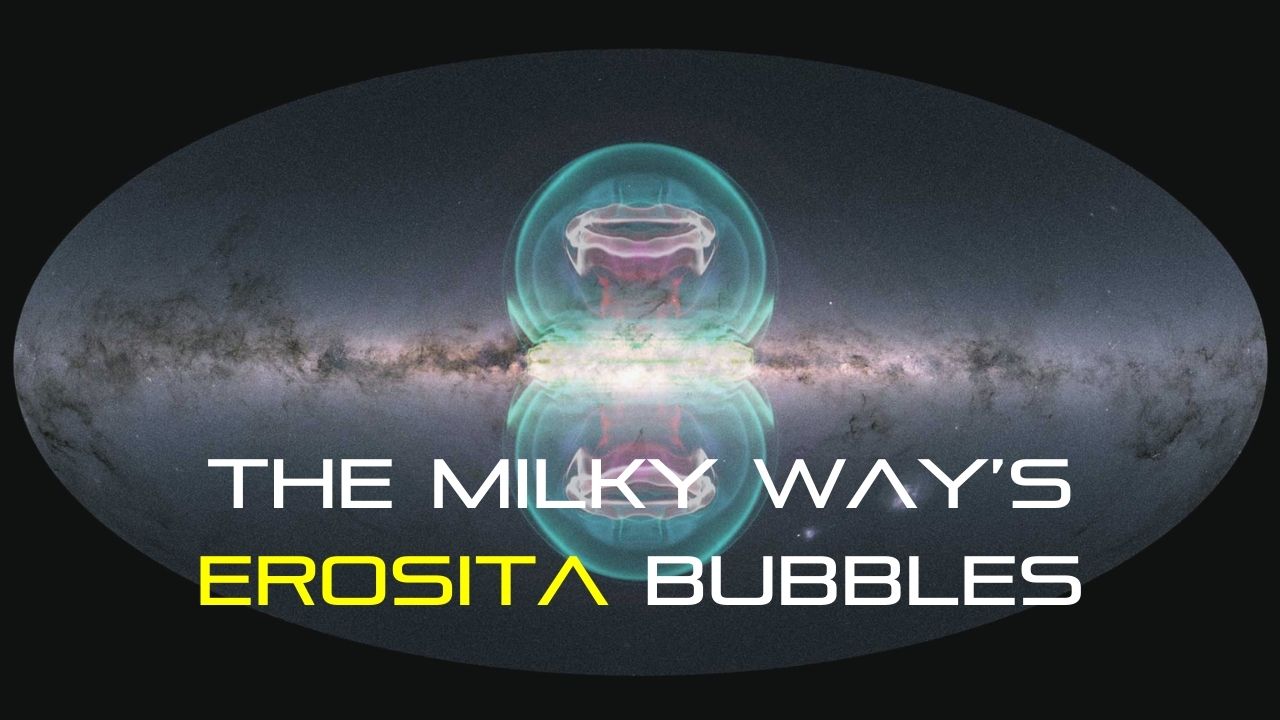The Milky Way’s eROSITA Bubbles
Context:
A team of scientists from China and Europe has discovered two prominent features of the “eROSITA bubbles” in the Milky Way galaxy, which various hypotheses have disputed.
The team has created a high-resolution map of the region and discovered evidence indicating that two prominent features within the eROSITA bubbles are interconnected rather than independent entities.
Key Highlights:
- The eROSITA bubbles were observed in soft X-rays, which are photons with high energy but less than the X-rays typically used in medical imaging.
- It exhibits quasi-circular lobes both above and below the plane of the Milky Way.
- Two prominent features in the northern bubble are the North Polar Spur (NPS) and the Lotus Petal Cloud (LPC).
- A shock front emitting polarised radio waves connects the NPS and LPC.
- The southern bubble’s border is less clearly defined than that of the northern bubble, showing fainter X-ray emissions and complex features in the radio spectrum.
About eROSITA Bubbles:
- These bubbles are two large, hourglass-shaped structures discovered in 2020 by the eROSITA X-ray telescope.
- They are similar to the Fermi bubbles, previously discovered structures bulging out of the Milky Way’s centre.
- These bubbles are larger and more energetic overall than the Fermi bubbles.
Hypotheses: Scientists have proposed two contradictory hypotheses to explain the eROSITA bubbles:
- Giant Galactic Bubbles: Some believe they are massive bubbles blown by the Galactic centre, extending over a staggering 10,000 parsecs (approximately 32,600 light-years).
- Sun-Adjacent Structure: Others suggest a smaller-scale structure (100 parsecs) located in the region of the sun, coincidentally aligned with the galactic centre.
- The 3D structure of the eROSITA bubbles remains uncertain. In 2D representations, they may appear as shadows or projections of an underlying phenomenon.
Challenge:
- Astronomers have successfully measured the distance to dusty clouds within the galaxy despite being unable to determine the distance to the X-ray emissions of the eROSITA bubble.
- A study found isolated dusty clouds at a distance of 500 to 800 parsecs, matching the X-ray shadows on the eROSITA bubbles. This implies that the bubbles are even more distant.
Implications:
The energy difference between the two proposed scenarios has important implications for the structure and history of our galaxy. Understanding the true nature of these eROSITA bubbles remains an exciting challenge for astronomers.

Galactic centre
- It is the point about which our Galaxy is rotating.
- It is located roughly 24,000 light years from the Solar System in the direction of the constellation Sagittarius, but cannot be seen in optical light due to heavy obscuration by interstellar dust grains along the line of sight.
- It is observable at wavelengths that are not as affected by dust, particularly infrared, radio, and X-ray wavelengths.





